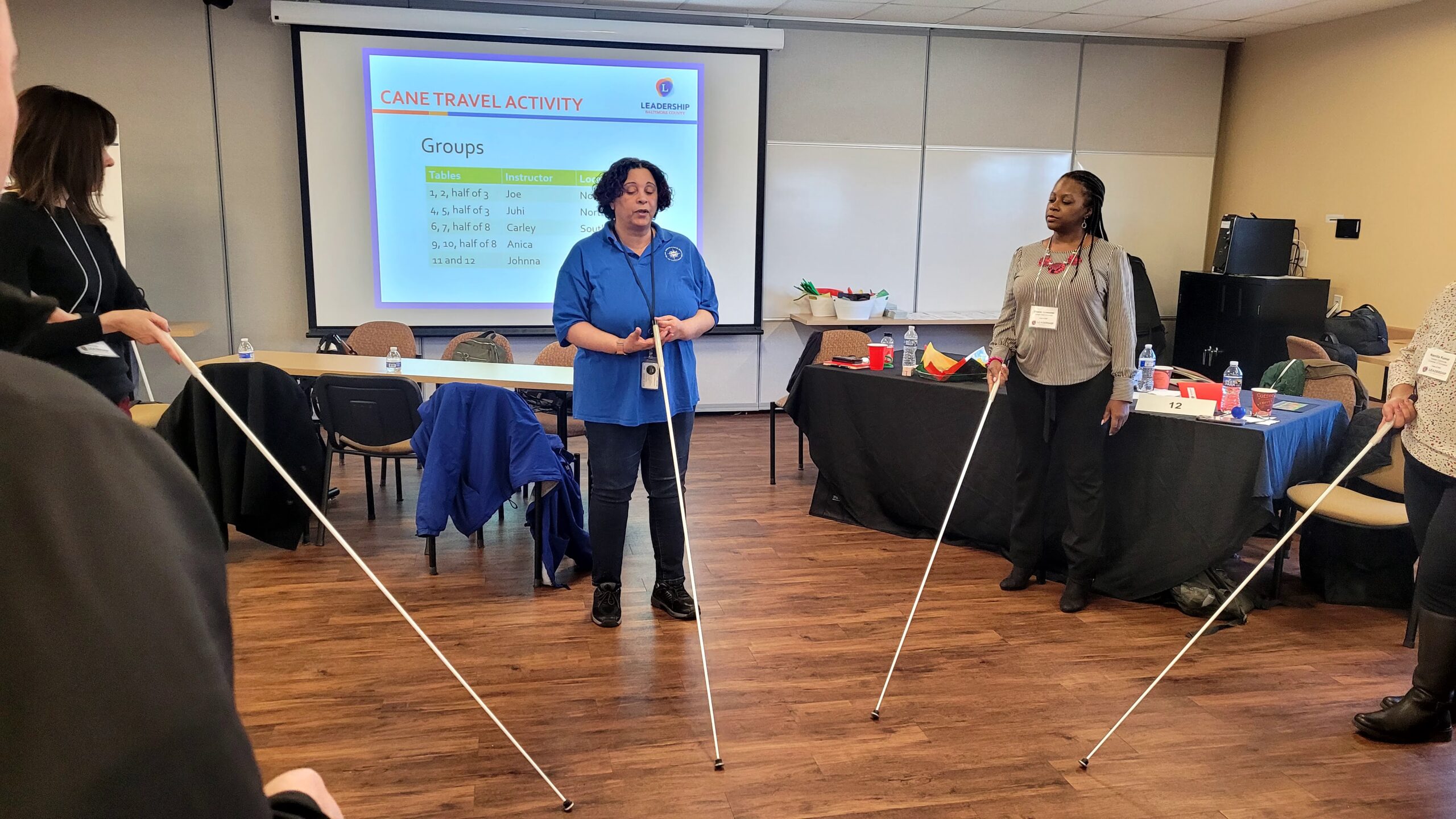Orientation and mobility—often simply referred to as “travel”—is a vital skill that empowers students to move through the world with confidence and independence. At Blind Industries and Services of Maryland (BISM), students learn proper cane techniques using a straight white cane, guided by trained instructors who tailor their approach to everyone.
Antonio Mendoza, a C.O.R.E. Orientation and Mobility Instructor, equips his students with the tools and techniques needed to succeed during training and beyond.
“I conduct an assessment to understand what the student is hoping to gain from training,” said Mendoza. “It also helps me gauge their current skill level so I can create a curriculum tailored to their goals.”
At BISM, students are introduced to the straight white cane on their very first day of Orientation and Mobility training. Unlike folding canes, straight canes are preferred because they offer superior feedback—both tactile and auditory—which helps students better understand their surroundings and build confidence.
“Straight white canes increase the auditory and tactile feedback, and also help a student face their blindness,” Mendoza explained.
Each student sets personal goals at the start of training, and while those goals might seem small at first, the outcomes can be life changing. C.O.R.E. student Alcene Chambers shared how Orientation and Mobility training changed her daily routine.
“Before coming here, I didn’t go out at night because I didn’t have my cane,” she said. “But with my cane, I’m confident and able to go out at night.”
Learning to rely on hearing rather than vision can be a challenge in the beginning. C.O.R.E. student Dirk Morgan experienced this firsthand. Wearing sleep shades for the first time during training heightened his awareness of sound in a way he hadn’t expected.
“The first time I put on the sleep shades and walked to an intersection, I was bombarded with the sound of the traffic,” Dirk recalled. “But now, I know if I hear a ‘tink,’ that’s the sound of a metal trash can.”
For instructors, seeing students grow into their independence is one of the most rewarding parts of the job. Mendoza shared a recent success story:
“My current student, Chris, had never touched a cane, never navigated a city, and had never left Mississippi. Now, he’s about to move into his own place, getting around independently, and starting his life in Maryland.”
BISM’s training approach is immersive and individualized, with instructors who are committed to each student’s success. Carly Mullen, Orientation and Mobility contractor and former Technology Instructor of C.O.R.E., worked with one student virtually during the pandemic, later transitioning to in-person sessions. She recalled how committed the student was—even after undergoing surgery days before their first virtual session.
“Collaborating with her on technique, building confidence, and listening skills—we were fortunate to work on all of that virtually,” Mullen said. “She stuck with it, and she practiced.”
Of course, the field of Orientation and Mobility comes with its challenges—especially when it comes to public misconceptions. Mendoza highlighted one of the most common ones:
“I believe one misconception is that you have to be sighted to teach Orientation and Mobility, when there are effective nonvisual teaching methods.”
There are also misconceptions from those interested in training themselves. Mullen often hears people say they’ll learn the skills later—when their vision declines more.
“The biggest misconception is, ‘I’ll learn this so when my vision gets worse, I’ll already know what to do,’” she said. “Why wait until later when you can learn it right now?”
At Blind Industries and Services of Maryland, we believe there are no limits. Through Orientation and Mobility training, students are given the tools, confidence, and encouragement to navigate the world on their own terms—today, not tomorrow.



